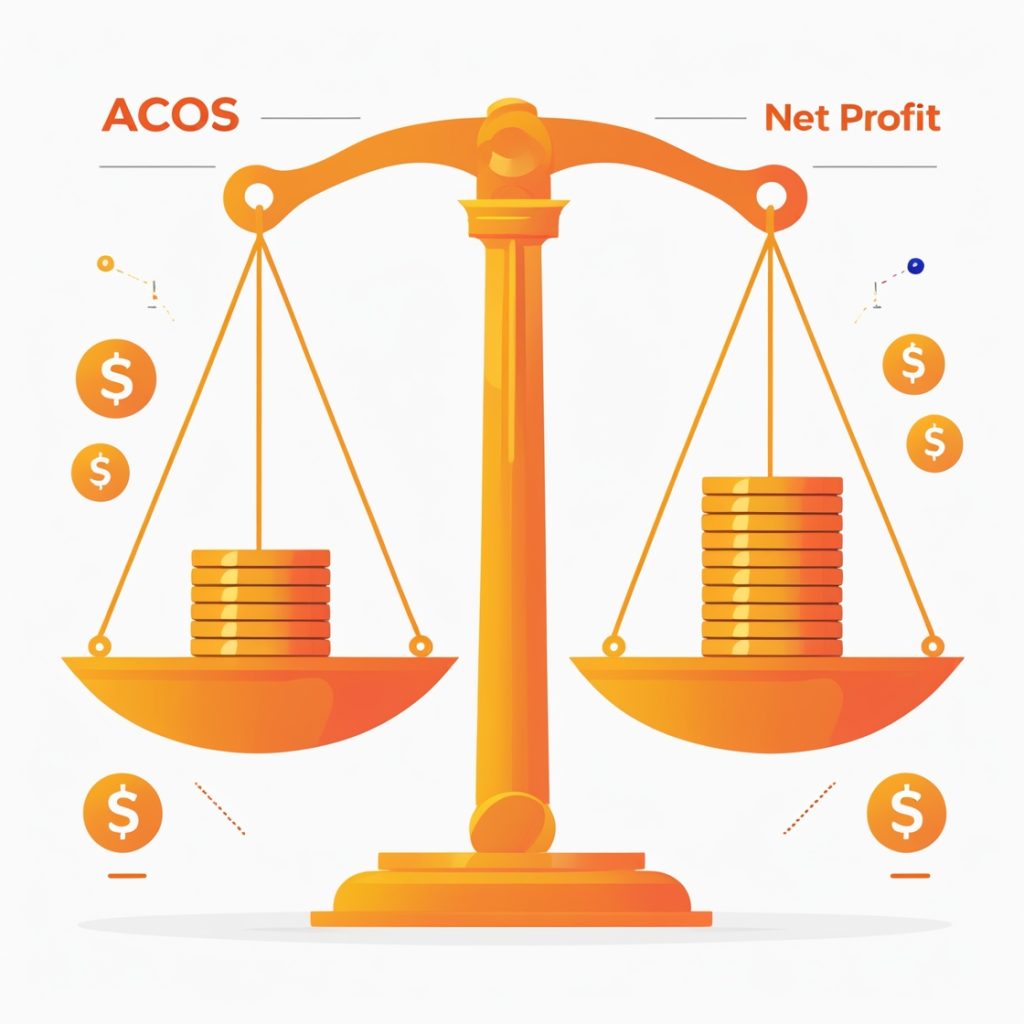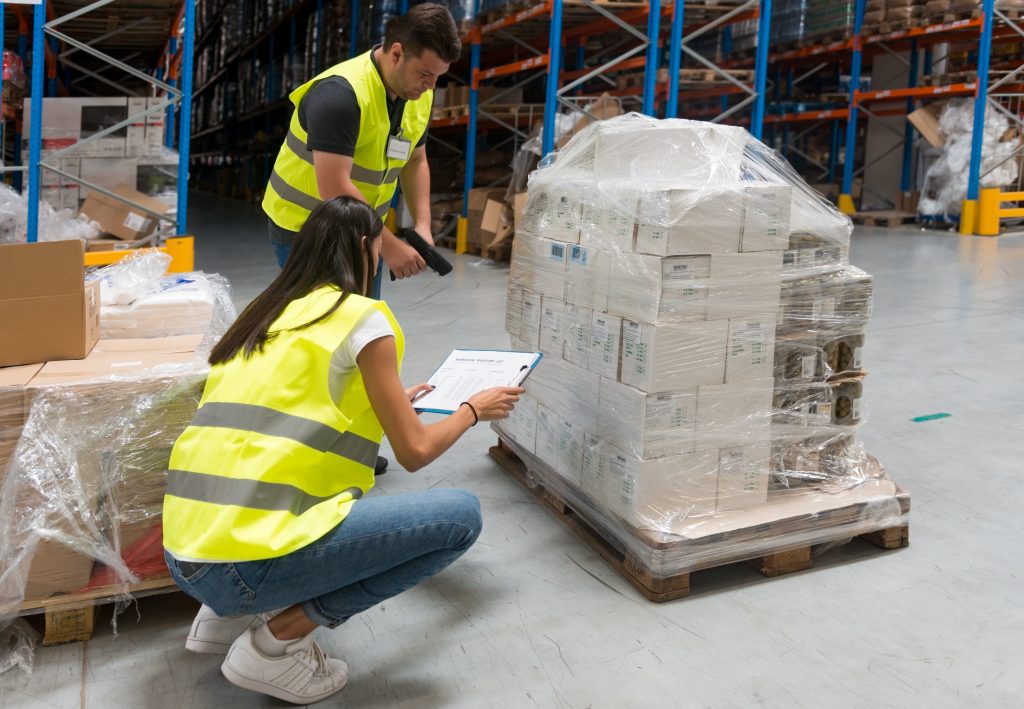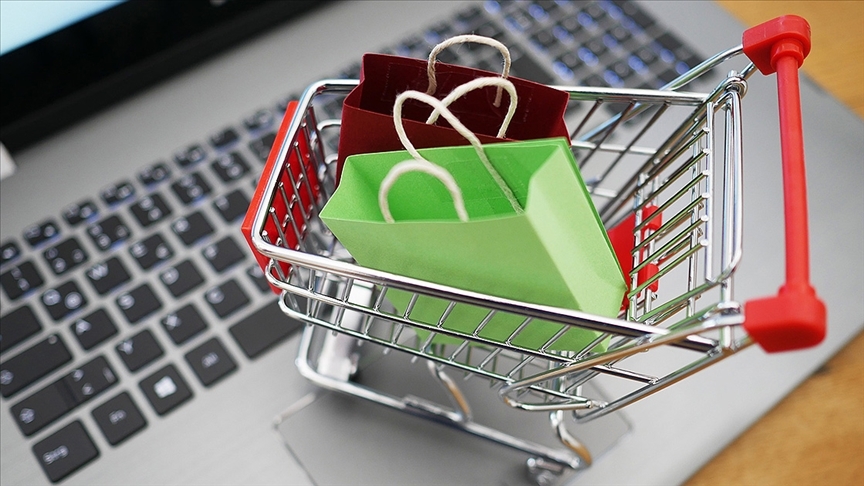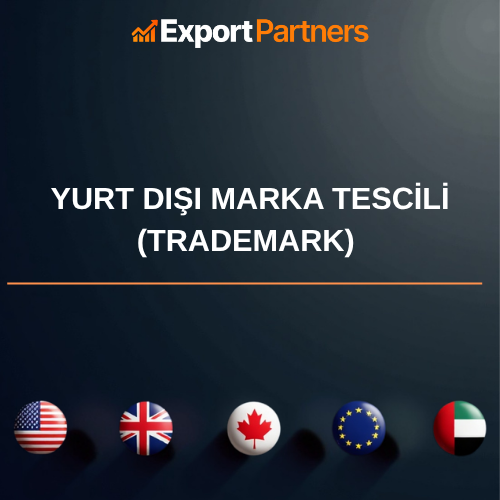2025 E-Export Government Incentives: A Comprehensive Guide
What are the E-Export Government Incentives as of 2025? In this guide, we explain all e-export incentivesin plain language, from digital advertising to warehouse rents, from trademark registration to software and integrations. You can learn the current support rates, differences according to target countries and annual upper limits determined for 2025; you can examine sample application scenarios and step-by-step application processes for each incentive type.
We also aim to help your business maximize the benefits of these incentives by emphasizing how the consultancy services offered by Export Partners overlap with these incentives. At the end of this comprehensive guide, which will be a guiding guide for all exporter SMEs, especially entrepreneurs selling on platforms such as Amazon, Etsy, Shopify, we will contact Export Partners and invite you to get professional support in your e-export journey.
Overview of E-Export Incentives in 2025
The Ministry of Trade introduced a new E-Export Support Program in 2023 to boost e-exports and facilitate SMEs' expansion into global markets. In 2025, the upper limits of incentives under this program were increased by approximately 36.45%.
Thus, it has become possible to receive higher amounts of support in many items from digital marketing expenses to logistics expenses. For example, according to the ministry's statement, there are supports of up to 70% for market entry reports and brand registration expenses. E-export incentives can basically be divided into two groups:
Support for Companies: Supports for Amazon advertising and launch, marketing, logistics and software expenses of e-export companies.
Support for Cooperation Organizations: Project-based support for associations, consortia or platforms.
The table below summarizes the main e-export support types, support rates and annual upper limits for companies as of 2025 (in TL). The amounts indicated are for standard companies, while higher limits may be applied for large-scale "retail e-commerce site" or "marketplace" businesses. Support rates can also be applied as 70% instead of 50% depending on the target country criteria (details are explained in the relevant sections).
| Support Type | Support Rate | 2025 Annual Cap (Companies) |
| Digital Marketplace Promotion Support (Digital Advertisement) | 50% (70% in target countries) | 28.615.135 TL |
| E-Export Promotion Support (Social Media & Influencer) | 50% (70% in target countries) | - (Status dependent) |
| Market Entry Report Support | 50% (70% in target countries) | 5.721.340 TL |
| Fulfillment Support | 50% (70% in target countries) | 28.615.135 TL |
| Foreign Warehouse Rental Support | %50 | 19.076.054 TL |
| Foreign Marketplace Integration Support (Software) | %50 | 761.018 TL |
| Online Store & E-Commerce Service Support | %50 | 5.721.340 TL |
| Marketplace Commission Expense Support | %50 | 2.860.670 TL |
| Trademark Registration and Protection Support | 50% (70% in certain cases) | ~600,000 TL (approx.) |
Note: The above-mentioned "Trademark Registration Support" is within the scope of classical export incentives and although it is not part of the e-export program, it is an important incentive that e-exporters should definitely benefit from. Amounts may be higher in large-scale branding programs (e.g. Turquality). In addition, support rates can be increased by 20 points for expenditures for target countries that the ministry deems to be prioritized.
As you can see, the government provides significant financial support in critical areas such as digital advertising and promotion activities, logistics (fulfillment and storage), marketplace commissions, integration software and market entry reports. Let's take each incentive item one by one and explain how it works and the application process with examples.

What is Market Access Report Support (Market Research Support)?
It is a support that covers the costs of market research reports and database memberships purchased to create an entry strategy for foreign e-commerce markets. In this context, 50% of the costs of reports purchased from professional research companies on topics such as country, sector, product and competitor analysis are supported. The support rate can increase to 70% for reports on certain prioritized target markets. Each company can receive up to 5.7 million TL of report support annually. The Ministry supports a maximum of 20 reports and 20 annual membership fees for a company.
Example Scenario: An SME wants to purchase comprehensive e-commerce reports for the German and US markets. It pays a consultancy fee of 100.000 TL for the German report and 120.000 TL for the US report. The government covers 50% of these expenses. In other words, 50,000 TL for the Germany report and 60,000 TL for the US report can be supported. If these countries are on the ministry's list of target countries (for example, the USA is considered a priority target market), the support rate will increase to 70% and reimbursement of 70,000 TL and 84,000 TL will be possible respectively. However, in any case, the total support amount for the relevant year cannot exceed the upper limit of ~5.7 million TL.
It is a support that covers the costs of market research reports and database memberships purchased to create an entry strategy for foreign e-commerce markets. In this context, 50% of the costs of reports purchased from professional research companies on topics such as country, sector, product and competitor analysis are supported. The support rate can increase to 70% for reports on certain prioritized target markets. Each company can receive up to 5.7 million TL of report support annually. The Ministry supports a maximum of 20 reports and 20 annual membership fees for a company.
Example Scenario: An SME wants to purchase comprehensive e-commerce reports for the German and US markets. It pays a consultancy fee of 100.000 TL for the German report and 120.000 TL for the US report. The government covers 50% of these expenses. In other words, 50,000 TL for the Germany report and 60,000 TL for the US report can be supported. If these countries are on the ministry's list of target countries (for example, the USA is considered a priority target market), the support rate will increase to 70% and reimbursement of 70,000 TL and 84,000 TL will be possible respectively. However, in any case, the total support amount for the relevant year cannot exceed the upper limit of ~5.7 million TL.
Application Process: You can follow these steps to apply for market entry report support:
- Report and Invoice Supply: In order to receive support, first purchase the report and receive the invoice on behalf of your company. The content of the report must contain up-to-date data compiled within the last 2 calendar years.
- DYS Registration: Your company must be registered in the Support Management System(DYS). DYS is the online application portal of the Ministry of Trade and all companies that will benefit from export subsidies must be a member of DYS. If you are not yet a member, apply to the relevant exporters' association to obtain a DYS user account.
- Making the Application: Market Entry Report Support Application Form is filled in via DYS. Documents such as a summary of the report, purchase invoice, payment receipt are uploaded to the system as separate files.
- Review and Approval: The application is reviewed by the relevant reviewing organization (usually a sectoral exporters' association) and submitted to the Ministry of Trade for approval. Additional information may be requested if necessary.
- Payment: Once approved, the support amount is transferred to the company's account. This is usually in TL at a set rate, subject to proof of payment of the report invoice.
Export Partners provides consultancy on market entry strategies, both in terms of providing reports and preparing the application file. For example, Export Partners team guides companies on which market research reports are eligible for support, ensuring the content criteria and preparing the application documents (report summary, contract, invoice, payment documents, etc.) correctly. In this way, SMEs can benefit from the report support without wasting time and minimizing the risk of error.

What is Digital Marketplace Promotion Support (Digital Advertising Incentive)?
This incentive covers part of the advertising and promotion expenses of companies on foreign digital marketplaces such as Amazon, eBay, Etsy. 50% of advertising costs are supported for 3 years for each marketplace platform. An important constraint here is related to the sales realized through the relevant marketplace: The amount of support can be up to a maximum of 20% of the sales generated through the ad. This practice is linked to the ACOS metric, which is often used in Amazon ads.
This incentive covers part of the advertising and promotion expenses of companies on foreign digital marketplaces such as Amazon, eBay, Etsy. 50% of advertising costs are supported for 3 years for each marketplace platform. An important constraint here is related to the sales realized through the relevant marketplace: The amount of support can be up to a maximum of 20% of the sales generated through the ad. This practice is linked to the ACOS metric commonly used in Amazon ads.
ACOS (Advertising Cost of Sale): A metric used to measure the effectiveness of an advertising campaign, showing the ratio of advertising spend to sales. As a formula, it is calculated as ACOS = (Advertising Spend / Sales from Advertising) × 100%. In other words, it is the answer to the question of what percentage of sales is advertising spend.
RDK (Advertising Conversion Coefficient): It is the inverse of ACOS. In other words, it can be calculated as RCR = Sales Revenue / Advertising Spend. RRC refers to the rate of return on advertising expenditure and is equivalent to 1/ ACOS. For example, if the ACOS is 25% (i.e. 25% of sales is advertising expenditure), then the RRR is RDK. The higher the RRR, the more sales each pound spent on advertising brings in.
Under this support, the 20% limit set by ACOS means the following: The government is committed to paying half of your spend, even if the return on sales of your ad is low, but the amount of support cannot exceed 20% of the sales generated by the ad. If your ACOS is 20% or less, this cap does not apply (you get 50% of your spend). However, if your ACOS is 50%, you can receive support up to 20% of the actual sale (i.e. only 20%/50% = 40% of your spend, since the upper limit is 20% of the sale).
Example Scenario: A company spent 100.000 TL for PPC ads on Amazon US marketplace and generated 500.000 TL sales revenue from these ads. Here ACOS = 100k/500k = 20%. In this case, the government gives half of the expenditure (50%) as support. So the company can get 50.000 TL back. If the firm had made the same expenditure and generated only 200.000 TL in sales, ACOS = 50%. Since the support amount cannot exceed 20% of the sales, a maximum of 40,000 TL (20% of 200k) is paid. On the other hand, if the target country criterion is met (e.g. if the company is targeting the Latin American market with these advertisements), the support rate increases to 70%. In the first scenario, 70.000 TL and in the second scenario, 40.000 TL (because there it is already stuck in the 20% limit) would be eligible for support.
- Target Country Advantage: For target countries (e.g. certain countries in South America, Africa or Far Asia) identified by the Ministry of Trade, the digital marketplace advertising support is applied at a rate of 70%. This is an advantage to encourage expansion into new markets. When applying for support, the target country of the advertising campaign is specified and if this country is on the list, an extra 20% support is provided in the payment.
- Conditions for Benefiting from Support: In order to benefit from this incentive, the GTIN (Global Trade Item Number), country of origin and registered trademark information of the products that the company e-exports must be entered during product listing in the marketplace. In other words, the barcode number of your products (such as UPC/EAN) and the information that your brand is registered in that country must be registered in the system. In some exceptional cases, such as micro-export cooperatives and artisans selling handcrafted products, GTIN and trademark requirements are not required.
Application Process: The steps to be followed to receive digital marketplace advertising support are as follows:
- Tracking Ad Spending: First of all, track your ad spends and their conversion to sales from your marketplace panel. Platforms like Amazon give you campaign-based spending and sales reports. Verify these reports by following them with UTM codes on them. (We will also talk about UTM in the E-export Promotion Support section.)
- Invoicing: Receive invoices for your marketplace advertising spend (e.g. Amazon Advertising invoices). Invoices must be issued in your company's name and payment must be evidenced by a bank statement or credit card receipt.
- DYS Application: Enter the Digital Marketplace Promotion Support application section in the DYS system. Upload the expenditure invoice, payment receipt and advertising performance report from the platform for the relevant advertising period. The application form asks for information such as campaign name, target country, expenditure amount, and sales generated. ACOS Account and Declaration: During the application, you will usually be asked to calculate the ACOS (SRMO) value of the campaign. Specify the ratio of ad spend to sales in percentage terms as described above. The system will take this value and the 20% rule into account to determine the support amount.
- Approval and Payment: The reviewing organization verifies your marketplace panel reports and invoices and sends them to the ministry for approval. Once approved, the appropriate amount (50% or 70%) is credited to your account.
Export Partners' Contribution: Export Partners provides consultancy on optimizing your digital advertising campaigns and preparing them for the support process. For example, by managing Amazon PPC, we help you keep your ACOS rate at reasonable levels so that you can take full advantage of the support. In addition, our team of experts will support you in using UTM codes, obtaining conversion reports and preparing the DYS application file (translation of invoices, screenshots of reports, etc.).
In this way, you can both increase your return on advertising investment (ROAS / RDK) and receive government incentives without any problems.

What is E-Export Promotion Support (Social Media & Influencer Marketing)?
This support covers all digital marketing and promotion activities outside the digital marketplace promotion support. In other words, it is for your overseas advertising, PR and brand promotion expenses that you make through your own e-commerce site or non-marketplace channels. A wide range of activities such as social media ads, influencer collaborations, search engine ads, SEO studies, content production, e-mail marketing are evaluated within the scope of this support. The support rate is 50% and is applied for 3 years for each target country. The rate can increase to 70% for promotions in markets in the target country category. 2025 annual upper limits are as high as ~95.4 million TL for retail e-commerce sites and ~114.4 million TL for marketplaces. (Note: The classic "companies" category cannot benefit from this support; it is only for large platforms and sites granted status by the Ministry. Nevertheless, we will describe here the general digital promotion activities that SMEs can also use, as they are critical for branding).
Scope and Sample Activities: E-export promotion support is quite comprehensive. Some of the types of activities supported by the Ministry are as follows:
Social Media Management: Opening, designing, regular content sharing and updating of foreign language social media accounts. For example, English content production on Instagram.
Influencer Collaborations: Paid promotions with popular social media influencers in the target country. Example: Having a YouTuber make a video about your product.
Digital Content Production: Preparation of promotional visuals, videos, product promotion films for foreign markets. Social Media Ads: Conducting paid advertising campaigns on platforms such as Facebook Ads, Instagram, TikTok.
Search Engine Marketing: Providing search ads, banner/display ads in the language of the target country through Google Ads.
Search Engine Optimization (SEO) and App Store Optimization (ASO): Optimizing your website or app to stand out in international searches.
Email and SMS Campaigns: Sending e-mail newsletters and campaign e-mails to foreign customers (to authorized databases).
Affiliate Marketing: Conducting affiliate programs to promote your products abroad for a commission.
Viral/Gerilla Marketing: Creative campaigns that can go viral on digital channels, referral (bring a friend) methods or similar growth hacking practices.
As you can see, almost every initiative to promote your brand in the digital environment, from influencers to SEO, is within the scope of support. The important thing is that the activities must be targeted abroad and in a foreign language. In addition, Turkish origin products are requested to be emphasized in product-oriented promotions.
UTM Code Requirement: The UTM code concept plays a critical role in this type of support. The Ministry requires UTM tracking in order to measure the performance of online promotions and verify that the expenditures are actually attracting customers from the target market.
What is UTM (Urchin Tracking Module)?
UTM is a piece of code added to digital ads that indicates which campaign or source users came to your site from. It consists of parameters such as utm_source, utm_medium, utm_campaign added to the end of a URL. For example, when a UTM such as ?utm_source=Instagram&utm_medium=influencer&utm_campaign=2025_year new year is added to the link shared by an influencer, it can be clearly seen in tools such as Google Analytics that this visitor came from that influencer campaign on Instagram.
Why Mandatory?
The Ministry requires results and analysis of promotional activities in support applications. Thanks to UTM codes, you can report, for example, how many people came to your website from the link in the description of a YouTube video and how many sales you made. The application forms ask "Was the UTM code used?" and the "Yes" option must be checked and the Google Analytics report of the relevant campaign must be submitted. In short, digital promotions without UTM are not considered within the scope of support. You can easily create UTM-coded links with Google's official Campaign URL Builder tool.
Example Scenario: A fashion brand is planning a multi-faceted digital campaign to gain awareness in the UK market. In this context: - It gets a London-based fashion influencer to promote its products in a YouTube video (10,000 TL). - UK-targeted ads on Facebook and Instagram for a total of TL 5,000. - Spends 3,000 TL on search ads for English keywords on Google. - It adds UTM parameters to all these links and measures conversions.
He can get 50% support for this campaign totaling 18.000 TL. This means a reimbursement of 9,000 TL. If the UK was on the ministry's priority target country list (let's assume it is not), the support rate would increase to 70% and the campaign would receive 12,600 TL. When applying, the influencer video report (how many clicks came, tracked with UTM), Facebook/Google ad reports, invoices of all expenses and payment documents will be uploaded to DYS. Tracking and filing data can be challenging with so many different channels, but experts like Export Partners will be there to help the company to present all the evidence in the correct format.
Application Process: The application for e-export promotion support may be slightly more complex than others, but the general outlines are as follows:
- Pre-Approval Application (if required): In some cases (especially for large budget promotional projects), pre-approval may be required in order to benefit from support. You submit your planned promotional activity to the Ministry of Trade with a Pre-Approval Form prior to the application. If the Ministry deems it appropriate, it approves it and then you make the expenditures. (Pre-approval is generally not required for small-scale promotions of SMEs, it is a detail for large campaigns).
- Making Expenditures: Carry out the promotional activities to be supported. Make contracts in social media collaborations and bill the advertising invoices to your company. Record performance data (impressions, clicks, conversions, etc.) on digital channels with UTM codes. Document Collection: Documents required for each activity: Invoice, payment document, contract or influencer report if there is collaboration, broadcast samples (screenshot, video link), campaign result reports, etc. Organize them all.
- DYS Application: Enter the E-Export Promotion Support section in the DYS system and enter the sub-activities one by one. For example "Instagram Influencer A campaign - amount X TL - UTM: (give) - Result: (add)". Upload each document as a separate file in the relevant field. Don't forget to include UTM reports (Google Analytics screenshots or exported data).
- Check and Approval: The reviewing organization checks that the campaigns are indeed targeted abroad, that the content is appropriate and that the documentation is complete. For example, Turkish content is not supported; this is checked. If everything is appropriate, the ministry gives approval.
- Payment: The approved amount is credited to the company account in TL within a few months.
- Export Partners' Contribution: Export Partners offers end-to-end support to companies in planning and implementing comprehensive digital campaigns. From selecting the right influencer for influencer marketing to contract management, agency management or campaign optimization for digital advertising. Especially UTM tracking and preparation of analysis reports require expertise - Export Partners, with its team experienced in Google Analytics and similar tools, compiles this data on your behalf and prepares the application documentation. Thus, we ensure that your creative marketing efforts are rewarded not only in sales but also in government support.

What is Fulfillment and Logistics Support?
Fulfillment support covers the costs of the services e-exporters receive in the process of delivering the orders they receive from abroad to their customers. In particular, expenses such as fulfillment center services such as Amazon FBA, packaging and delivery of products through foreign warehouses, and management of return transactions are covered with this support. The support rate is 50% and is valid for 3 years for each target country. The support cannot exceed 10% of your total e-commerce sales in the relevant country. It is important to pay attention to this critical limit: If your fulfillment spend is too large a portion of your sales, the support will be restricted accordingly.
In 2025, the annual upper limit for fulfillment support is set at 28,615,135 TL for companies. For larger e-commerce sites and consortia, this limit goes as high as 95 million TL. In other words, it is possible for an SME-sized company to receive half of the amount it actually pays (as long as the sales/spending ratio complies with the 10% rule).
Target Country Difference: As with digital marketing support, fulfillment support to encourage the establishment of fast delivery infrastructures for the target countries identified by the ministry can be applied at a rate of 70% in these countries. For example, if you use a logistics center in the Far East or Latin America, your support rate may be 70% instead of 50%.
Example Scenario: An e-export company hires the services of a fulfillment company in Germany to accelerate its European sales. This company keeps the stocks sent by the company in its warehouse and delivers them to customers in Germany in 1-2 days, and also manages the return processes. The company pays 20,000 Euros (approximately 600,000 TL) for this service throughout the year. In this way, e-export sales to Germany reached a total of 6,000 orders and a turnover of 6 million TL (let's say the average product price is 1,000 TL).
When application is made with Fulfillment invoices and contract: - Expenditure: 600.000 TL, Sales: 6.000.000 TL. 10% of the sales in this country makes 600.000 TL; that is, the expenditure is exactly 10% of the sales, not exceeding the limit. - With a 50% support rate, the company receives a refund of 300.000 TL. (If the target country was a country on the list, it would have received 420.000 TL with 70% support). - If the company's sales were lower, for example, if it had spent 600k against 3 million TL, the support payment would be limited to 300k TL since 10% of the sales would be 300k TL, and the effective rate would drop to 25% instead of 50%.
As can be seen from this example, it is important that your logistics expenses are balanced with your sales in order to fully benefit from government incentives. In fact, this metric is critical for profitability in e-exports.
- Application Process: Service Provider Approval: The Ministry may require you to obtain fulfillment services from companies with certain qualifications. For example, Amazon FBA is already eligible. However, if you are receiving services from a private 3PL logistics company, criteria such as being a legal business abroad are sought. Confirm the suitability of the service provider with your consultant before applying.
- Contract and Invoices: Obtain the contract you have with the fulfillment company and the service invoices they have issued to you. Invoices should clearly show the service description, country, period and amount.
- GTIN and Trademark Information: Just like digital advertising support, this support requires that your products have GTIN (barcode) and registered trademark information entered in the marketplaces. This is to ensure that your products are traceable at every stage and that it is clear that they are Turkish brands.
- DYS Application: Log in to DYS under Fulfillment Service Support. Select the relevant country (such as Germany) and service provider information. Specify the amount you paid during the year and the corresponding sales turnover. Upload the invoice and payment documents, and service reports if available. Review: The exporter association examines the scope and amount of the service on the invoice and can check whether your sales are actually at the level indicated in ETBIS records or your declarations. If elements such as warehouse address and service description are appropriate in the contract, it will forward it for approval.
- Payment: After confirmation, the earned amount will be credited to your bank account.
- Export Partners' Contribution: Export Partners supports its customers in finding the most suitable fulfillment solutions and running the operation efficiently. For example, we provide consultancy on decisions such as whether it is more advantageous to use a warehouse in the US or Europe, whether Amazon FBA or 3PL, and how to set up return management. This keeps your logistics costs under control and maximizes the benefit of the support. We also accelerate the process with our experience in preparing application documents - especially Turkish summaries of contracts with foreign service providers, translation and transcription of invoices. With Fulfillment support, you can cut your logistics costs in half and Export Partners will be there to help you grow your business.

What is Foreign Warehouse Rental Support?
This is an incentive that supports the integration software and service costs of e-exporters to easily sell their products on multiple marketplaces.
For example, if you use a software that integrates your product catalog and orders to platforms such as Amazon, eBay, Etsy, Shopify (e.g. N11 Integrated, ChannelAdvisor or similar SaaS tools), the license, installation, API integration fees of this software are supported by 50%. It is valid for 3 years for each marketplace platform and maximum 6 different marketplace integrations can be evaluated within the scope of support. Integration costs up to 761.018 TL per platform are supported.
Scope: Within the scope of integration support, expenses such as software development, cloud server service, annual maintenance/subscription fees, marketplace membership opening fees required for the first installation are included. However, turnover-based commissions, taxes or penalties paid to the integrator company are not considered within the scope of support. The integration mentioned here is the technical connection established between your e-commerce system and the marketplace. In this way, for example, instead of manually entering more than 1000 products one by one, you list them as integrated and manage stock and orders from a single panel.
Example Scenario: A company wants to sell on Amazon, Zalando and Trendyol (international version) platforms at the same time using its ERP in Turkey. For this, it contracts with an integration software company. The company demanded a total of 300,000 TL installation and service fee for these 3 platforms in one year. In addition, 20,000 TL was spent for opening a store in the marketplaces.
In this case, 160.000 TL can be recovered with 50% support for a total expense of 320.000 TL. (761k TL per integration remains within the limit, no problem.) If the number of platforms integrated increases (up to a maximum of 6 platforms), their fees are also supported. Of course, there is a condition that at least 1000 SKUs must be listed with the integration for each platform - this support is more for companies with a wide range of products. If this company has less than 1000 products, maybe it can't get integration support, but in our example, if it has 2000 products, it meets the requirement.
Application Process:
- Preliminary Preparation and Conditions: The company wishing to benefit from the integration support must list at least 1000 different stock items (SKUs) in the marketplace to be integrated. This is an important criterion, usually asked in the application form. In other words, if your product variety is very low, you cannot benefit from this support.
- Service Purchase Agreement: Get the contract you made with the software company providing integration services. In this contract, it should be clear which platforms will be integrated, the scope of service (software license, API access, maintenance, etc.) and the fees.
- Invoices and Payments: Obtain invoices and payment receipts from the software company. For example, installation fee invoice, monthly/yearly license invoices, etc. Collect them all.
- DYS Application: Enter the Foreign Marketplace Integration Support section in DYS. Select which marketplaces are being integrated (platform list can be provided). Enter the expense amount for each. Upload contracts, invoices, payment documents, screenshots showing that the integration is working (may be requested in some applications). Review: The Ministry looks at whether the platforms you integrate with are truly foreign-oriented and the number of products integrated. It also requires the integration to be done using a special software or API other than the marketplace's own seller panel (it already provides support for this). If everything is in order, approval is granted. Payment: Half of the approved amount is credited to your account.
- Export Partners' Contribution: Export Partners provides expert support in integration projects that facilitate the work of companies operating in multiple marketplaces. Thanks to our domestic e-commerce infrastructures such as Ikas, Ticimax and global integration solution partners in our partner network, we help you choose the most suitable software for your company and commission it. We stand by you in case of technical problems that may occur after the integration installation, and we also ensure that the services received from the relevant software company comply with the support legislation. For example, we take care of details such as ensuring that contracts and invoices are in the correct format for support and preparing platform opening documents. Thus, while you focus on the sales and marketing part of your business, you gain operational efficiency and cover half of your software costs with government support.
What is Online Store and Target Country E-Commerce Services Support?
This support item covers services provided to e-exporters to open stores in marketplaces in target countries and to adapt to the e-commerce ecosystem. It has two main dimensions:
Online store opening and membership expenses: For example, annual membership fees paid to open a store in a marketplace in the target country, showcase/store rental fees are supported.
Target country e-commerce stakeholder services: This includes a variety of consulting and operations services that may be required to successfully sell in that marketplace: this includes comprehensive service packages such as local language translation for product listing, local customer service support, campaign management, logistics and customs consulting.
The support rate is again 50% and is applied for 3 years for each country. For 2025, the annual upper limit is 5.721.340 TL for companies and retail sites, and up to 11.444.789 TL for e-export consortia.
- Target Countries Condition: This support is only available to marketplaces in target countries identified by the ministry. The Ministry has published a list as of 2025: This includes the US, Canada, Japan, China, India, the US, Canada, Japan, China, India, and about 18 countries with populations over 100 million or considered strategic. Countries such as Singapore, Brazil and South Africa are also on the list. The company can receive support for store openings in these countries if its exports in the previous year were over $2.5 million. In short, you are encouraged to have a presence in certain large markets.
- Example Services: Some of the consultancy services that are considered within the scope of support by the Ministry are as follows: - Language Support: Translation of product content into the language of the target country. - Product Management: Local e-commerce partner's entry of products to the marketplace on your behalf, stock, price tracking, etc.
- Order & Return Management: Approval of customer orders, entry of cargo tracking information, management of cancellation and return processes. - Customer Service: Providing customer communication and support in local language (answering questions, resolving complaints).
- Digital Marketing & Social Media: Digital promotion and social media management services for your brand outside the marketplace in the target country. - Sales Reporting: Sharing regular sales reports and analysis. For example, consider a company that wants to enter a platform like Tmall in China: Local agencies there, usually called TP (Tmall Partner), offer these services as a package. The ministry supports such service purchases.
Example Scenario: A food company decides to open a store on Japan's Rakuten marketplace. Japan is on the target country list. It paid an annual membership fee of $10,000 (~270 thousand TL) for the store opening. He also contracted with an e-commerce consulting firm in Japan and received a service package of $15,000 (~405 thousand TL) for the translation of product descriptions into Japanese, local customer service and logistics organization. His total expenditure was ~675 thousand TL. It can receive 337.5 thousand TL support, which is 50% of this expenditure. If this company makes similar expenditures in the 2nd year, it can apply for this support every year for up to 3 years (provided that it stays within the annual limit of 5.72 million TL). In this way, it will halve its entry costs to the Japanese market.
- Application Process: Country and Platform Identification: First check whether your company meets the conditions to benefit from this support. You must be active in a country on the target country list and if your company status is required (such as 2.5m$ exports in the previous year) you must meet it.
- Store Opening Documents: If you have opened a membership to the marketplace, get documents such as a contract or invoice receipt. The receipt/statement of the membership fee you paid is important.
- Service Contract and Invoices: If you have worked with a consultant/partner company in the target country, provide invoices for the contract and services you have received from them. For example, an invoice such as "XYZ Co. - Japan E-commerce support service - $15k".
- DYS Application: Enter DYS under Online Store and E-Commerce Stakeholder Services Support. Specify the country and marketplace. You may need to enter the store opening cost and partner service cost as separate items. Upload each of your documents (contract, invoices, payment receipts) to the system. Review: The reviewing organization checks that the services you have received are actually for the marketplace in the target country and are counted as part of the support. For example, if the service includes a marketplace commission or a deposit payment, these are not eligible - they are weeded out. The eligible parts are calculated and submitted for approval. Payment: Half of the approved amount is paid to you.
- Export Partners' Contribution: Export Partners provides both consultancy and network support to companies that want to establish marketplace operations in different countries. For example, we have reliable local business partners in markets such as the USA, Europe and China. We are a bridge for you to get services such as store opening, product localization, local customer support at the most affordable cost. In this way, you can be sure of the quality of the services you will receive, while at the same time establishing a structure suitable for the support mechanism. On the application side, we can contact service providers abroad and request the necessary reports/documents in their language, translate them and add them to the DYS file. As a result, while you focus on expanding your business in the new market, Export Partners makes it possible for you to recover a significant portion of your market entry costs with government support.

What is Marketplace Commission Expense Support?
This support is based on the government covering half of the commission costs you pay on marketplaces in certain target countries. For example, when you sell on platforms such as MercadoLibre in Latin America or Flipkart in India, that platform deducts 10-15% commission from you. You can get 50% of these deductions back from the government. The support is 50% and valid for 3 years. For 2025, the annual upper limit for companies is 2.860.670 TL (~9.537.000 TL for retail sites, ~11.444.000 TL for consortiums).
Target Countries: It should be noted that commission support is only available for certain countries. The Ministry has targeted some emerging markets here: Argentina, Brazil, India, Indonesia, the Philippines, Egypt, Brazil, India, Indonesia, Indonesia, Indonesia, the Philippines and Egypt. The commissions you pay on marketplaces in these countries (e.g. MercadoLibre in Brazil, Amazon.in in India, etc.) are supported. European or US marketplaces are not on this support list (they are already competitive markets, so no privileges are granted).
Example Scenario: An electronics company sells $100,000 on the MercadoLibre platform in Brazil during 2025 and pays 15% commission to the platform. The total commission amount is $15,000 (~405,000 TL). Since Brazil is a listed country, the company can receive 50% of this 405k TL, 202.500 TL, from the government. Since this amount is below the annual limit of ~2.86 million TL for companies, it is paid in full. If the company made a similar sale in the Philippines and paid 300k TL commission, it can apply separately and receive 150k TL. However, the total is 352.500 TL, still under the limit. If the limit is exceeded, the excess part is not paid.
Application Process:
- Determining Commission Amounts: The marketplace usually either shows the commission on the receipt of each sale or gives you a monthly total commission invoice. For example, Amazon pays you every 15 days and lists the commissions in the detail report. Print out these documents. You need to submit the marketplace commission statements in the support application.
- Document Provision: If the relevant marketplace issues invoices (in some countries platforms issue commission invoices), obtain them. If not, download the commission information from the account statements as PDF/Excel. If necessary, you can also get an official letter from the platform. DYS Application: Enter DYS under Marketplace Commission Expense Support. Select the country and platform. Specify how much commission you pay periodically and its TL equivalent. Upload commission breakdowns and platform payment records as documents.
- Review: Here, the ministry looks specifically at the relevant country criteria; if the platform for which you are paying commissions is not in the country covered by the support, it will be rejected. For example, if a company mistakenly puts Germany Amazon commissions, it is not covered. If they are in the right country and the documents are consistent, they will be approved. In addition, as a product listing requirement, GTIN and brand information must be entered on your product pages (a requirement that is repeated in almost every support.
- Payment: Half of the approved commission amount is paid in TL.
- Export Partners' Contribution: This support significantly reduces the operational costs of companies in new markets. Export Partners assists clients that start marketplace operations in regions such as Latin America and Southeast Asia, both in the processes on these platforms (e.g. registration, language barriers, logistics) and in managing commission refund applications. In particular, some marketplaces may not provide commission invoices; in this case, reports from platform interfaces may need to be submitted to the ministry in the right way. Since Export Partners knows the working logic of these marketplaces, it can predict which documents will be accepted as official and prepare the application accordingly. As a result, for example, if you are a brand considering expanding to the Indian market, you can easily carry out both the operation there and the incentive application with Export Partners support

What is Trademark Registration and Protection Support?
It is a classic government subsidy for the costs of registering and protecting your trademark abroad. Trademark registration is vital for any company planning to e-export - because without registering your trademark in a country, you will not be able to sell effectively even in marketplaces, and you will take legal risks. The Ministry of Trade provides support for up to 50% of foreign trademark application and registration costs. Both e-exporters and traditional exporters can benefit from this support. Items such as trademark registration fees, consultancy fees, Madrid System applications, renewal fees are within this scope.
While the amount of support is limited per country and per brand, as of 2025, up to approximately 600,000 TL can be received (for multiple brands and countries, this amount should be considered per brand). The Ministry has also announced that it may apply rates of up to 70% to encourage trademark registration in some priority markets.
Example Scenario: You have a fashion brand and sell in the US and EU markets. Registering your brand in the US with the USPTO (US Patent and Trademark Office) costs $2500; EU-wide registration with the EUIPO (EU Intellectual Property Office) costs €2000. Total TL equivalent ~ let's say 80.000 TL. You can get back half of these expenses as support, i.e. 40.000 TL. You can also get similar support when renewing your trademark or registering in other countries (such as China, Japan) in the future. By the way, for e-exporters, trademark registration is not only a support, it is a necessity - because in order to get a Brand Registry on platforms like Amazon, a trademark certificate registered in that country is a must.
- Trademark Registration Process (Briefly): There are two ways to protect your trademark abroad: Either you apply individually to the trademark office of each target country, or you can request registration in multiple countries with a single international application through WIPO's Madrid System. For example, the US requires an application to the USPTO, while a single application to the EUIPO for the European Union covers 27 countries. It is important to build your international registration strategy.
- USPTO Example: If you export to the US, a trademark registration is initiated with an online application to the USPTO. Certain fees are paid per class and a trademark registration can be obtained in about 8-12 months. The USPTO protects your trademark for 10 years, after which you need to renew it.
- WIPO Madrid Example: Let's say you want to protect your trademark in 5 different countries. By filing a Madrid Application through WIPO, you can request registration in all of these countries with a single file. This is a more centralized method. Of course, your trademark must be registered in Turkey first - you need a basic trademark to start the Madrid system.
Application Process (for support):
- Prerequisite: In order to benefit from the Ministry of Trade trademark support, the company must have a trademark registration certificate in Turkey. In other words, you must first have registered your trademark with the Turkish Patent and Trademark Office. You must also have filed at least one foreign registration application (even if it is not finalized, the application is sufficient).
- Application Documents: When filing a trademark application abroad, you usually use a trademark attorney. Documents required for support: Foreign trademark application certificate or registration certificate, fee receipts paid to the trademark office of that country, trademark attorney invoice, etc. Obtain these.
- DYS Application: Apply for Trademark Registration Support (or a similar name, this support can be in the category of classic export support) on DYS. List the name of the trademark, the countries in which it is registered, the application/registration dates and the costs incurred. Upload your documents.
- Review: The relevant unit (such as the Branding Branch of the General Directorate of Exports in Turkey) reviews the documents. Main checkpoints: That you own the trademark (proved by the Turkish registration), that the foreign application was actually filed (WIPO publication or country office document), and that payments have been made. There may be certain upper limits for each country, and they calculate accordingly.
- Payment: 50% (or 70%, if the ministry has prioritized and increased the country) of the approved amount will be paid into your account.
- Export Partners' Contribution: Export Partners also guides e-exporters on their brand strategy. We explain which markets prioritize trademark protection and the advantages of the WIPO Madrid system. If you wish, we can bring you together with reliable trademark attorneys and speed up your applications. For example, when filing a trademark application in the US, it is critical to choose the right classes - our team shares their experience in this process.
We are at your side during the application for support, filling out the necessary forms, translating and documenting the expenditure items. Remember, branding is not only a legal obligation but also the key to lasting success in cross-border markets. Export Partners protects your brand in the global arena and aims for sustainable growth by enabling you to recover a significant portion of your costs.
Application and Counseling: Conclusion and Call
As you can see, thanks to the e-export government incentives in 2025, you can cover half of your expenses in many areas from digital advertising to logistics, software to trademark registration with government support. These incentives are unique opportunities for entrepreneurs selling on platforms such as Amazon, Etsy, Shopify, etc. that increase profit margins and reduce the risk of expanding to new markets. However, each incentive has its own conditions, limits and application procedures. If you do not prepare properly, you may risk not receiving the support payment even if you deserve it.
As Export Partners, we are with you at every step of e-export. We offer an integrated service with our digital marketing experts, logistics and operations consultants, legal and financial teams. We undertake DYS applications, UTM reporting and ACOS optimizations that may be complicated for you. We closely follow the current developments in official processes (e.g. new communiqué changes, target country lists, etc.) and update your roadmap accordingly.
Now is the time to take action! If you want to take your products to the world markets and benefit from these government incentives at the maximum level, contact Export Partners immediately. Our team of experts will evaluate your company's situation free of charge, determine the supports you can receive, start your application process and get results in a short time. All the support you need for success and sustainable growth in e-export is at your fingertips with Export Partners consultancy.

